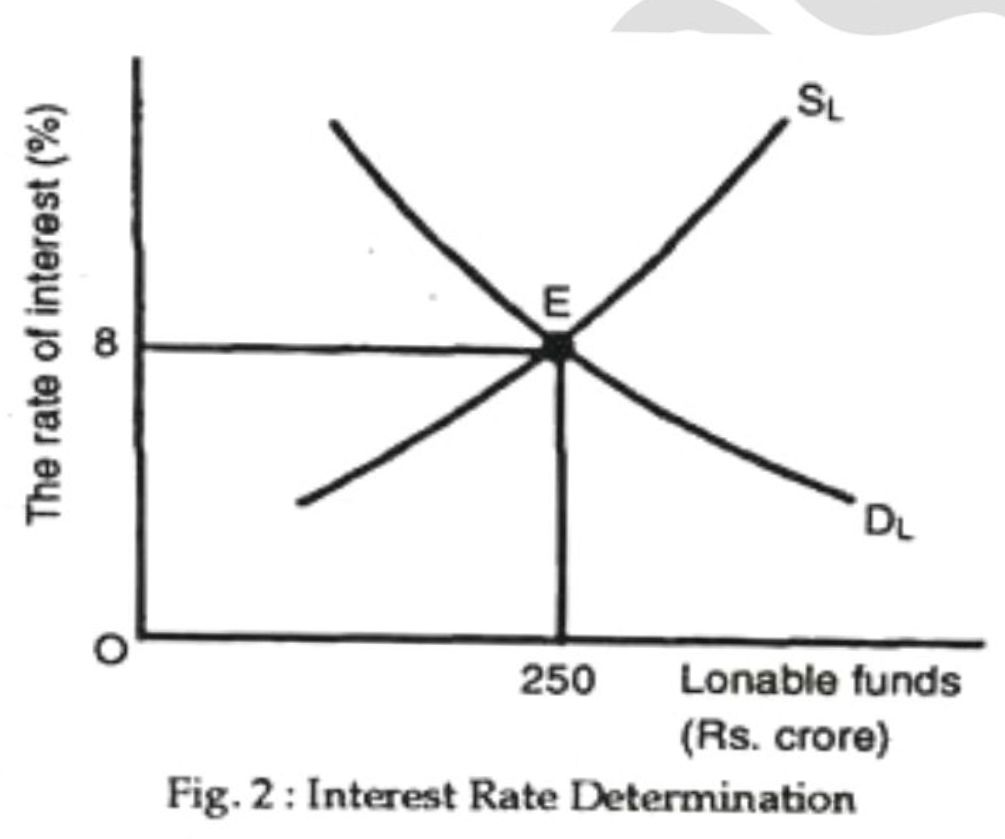Introduction:
Loanable funds theory of interest is an extension of the classical theory of interest the theory was formulated by a Swedish economist wick sell. Later on professor Robertson, Ohlin and others have redefined it.
According to the theory the equilibrium interest rate is determined by the equality between demands for supply of loanable funds, interest rate is the price paid for the use of these loanable funds.
Definition:
In the words of Hansen, the interest rate is determined by the interaction of demand schedule for the loanable funds with the supply schedule. The expression loanable fund is wider in its scope. Loanable funds are the sum of money supplied and demanded at any time in the money market.
Loanable Funds Theory of Interest:
Supply of loanable funds:
- Savings: Savings by individuals and household constitute the most important source of supply of loanable funds they are of two types
- Planned or ex-ante savings – Saving planned by individuals at the beginning of a period in the hope of expected incomes and anticipated consumption expenditure.
- Unplanned or ex-post savings: It is the difference between the income of the preceding period and consumption of the present period the level of savings depend on the level of income.
- Dishoarding: Dishoarding of idle cash balances, past savings Etc. may be released into the market dishoarding will be greater if interest rate is high and vice versa.
- Bank credit: As manufacturers of money create credit money and advance it to the individuals and business units generally speaking higher the interest rate higher would be the advances and vice versa.
Demand for loanable funds:
- Demand for investment: loanable funds are demanded for investment purposes. Investment may be undertaken either by individual, business, houses or companies the investment demand depends on the productivity of capital. It is interest elastic it varies inversely with the interest rate lower the interest rate higher would be the demand and vice versa.
- Demand for consumption: people may borrow for consumption purpose it arises when the expenditures are greater than the income of the people. This also varies inversely with the interest rate lower the interest rate higher would be demand for loans and vice versa
- Demand for hoarding: some people may like to hoard a park of their saving in cash. Hoarding implies keeping cash balances this desires to hoard cash is called liquidity preference. It is important to note that some people who are holding cash balance or also the suppliers of loanable funds. The demand for hoarding is interest elastic thus the demand curve slopes downwards from left to right.

also read: explain the innovation theory of profit.